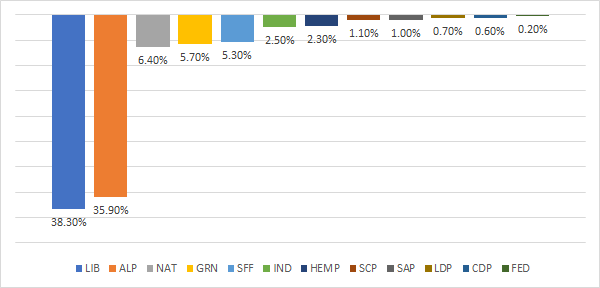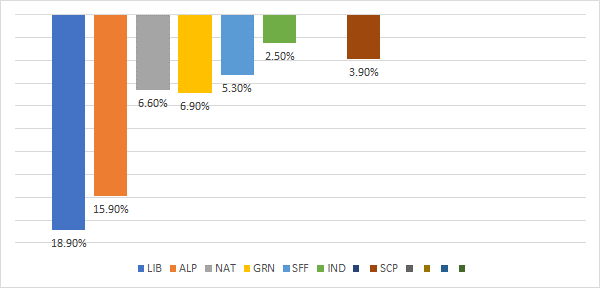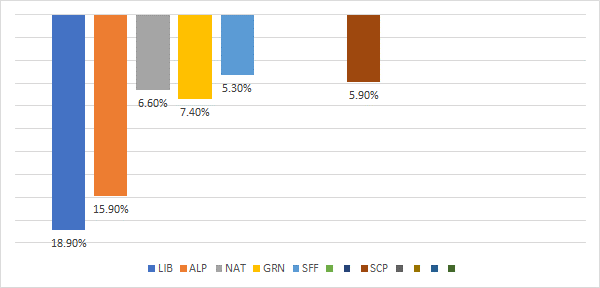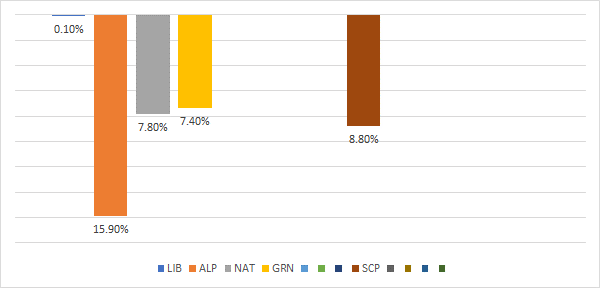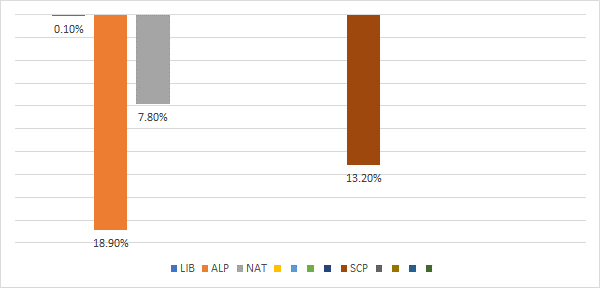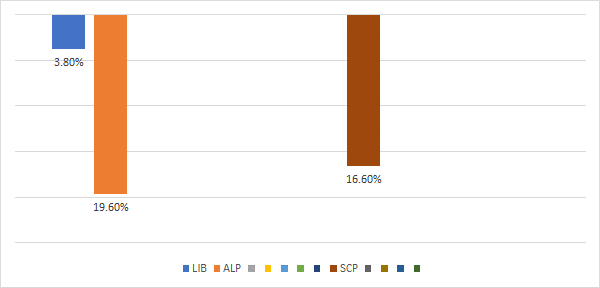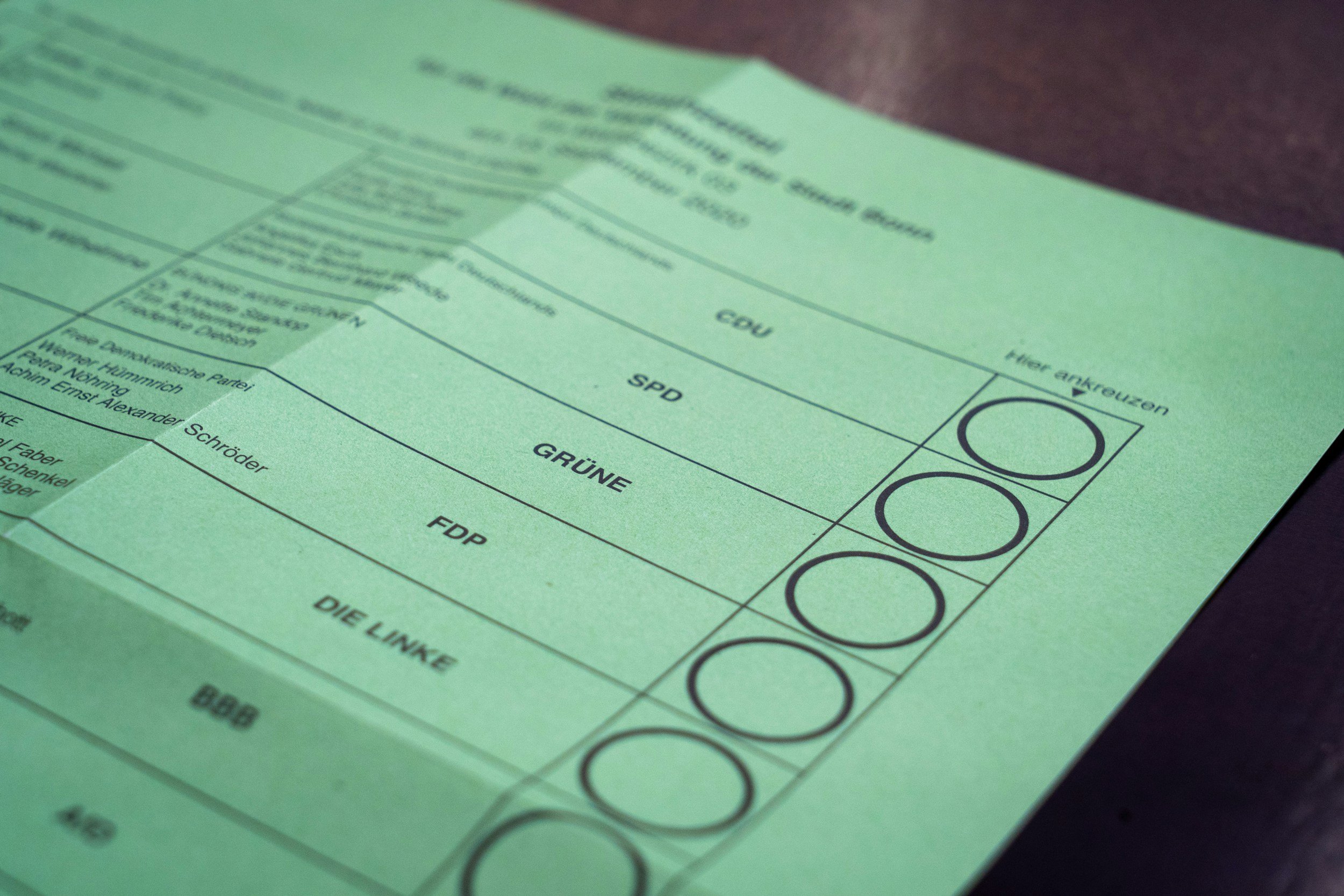
Wolfendale System
Worked Example - Stage 1
Stage 1 - Initial Process
For this example we shall begin with the results of the 2020 Eden-Monaro by-election. This is considered a bellwether seat, and so typically has a diversity of positions represented in the voting base. Additionally, for this analysis the independent candidates were grouped into a block vote to simplify the example.
Step 1:
All of the first preferences are counted and the result shown above is achieved. On the top bar every major tick line is 10% and minors are 2%. The lower set in this step and each other going forward shows the % of the whole which is not yet assigned. Note; colours do not match with typical party colours from the example to avoid visual bias and improve visual clarity.
Step 2:
There are 2 seats able to be assigned, but no individual party has enough proportion for the 3rd.
Step 3:
We subsequently move to step 3 where parties are eliminated from the bottom up with their votes redistributed according to preferences. Note; preference flows are theoretical and do not necessarily represent the real-world flows that occurred during the real-world event.
With the elimination of the first 4 parties some go to LIB and NAT, but due to general disillusionment SCP collects most of the initial eliminations. This puts HEMP on the chopping block next.
The HEMP party preferences are split between SCP and GRN. Next up is IND.
IND goes partly to SCP and partly to GRN. Next up is SFF.
We shall now explore how this might look approaching the two cases separately.
Case 1 - 4 Seats Easily Assigned
Case 1: (assign 4 seats)
SFF is split almost evenly between LIB and NAT, resulting in LIB reaching >20% and being assigned a second seat. 60% of the proportion has now been locked down.
The 1.6% still with LIB cannot be removed as they are already in possession of a seat, so at the next stage SCP is evicted.
SCP preferences are split between the more extreme GRN and the more moderate ALP, with negligible preference flow to the other parties. This takes NAT out of its secure 3rd spot.
The majority of NAT flows to LIB, but a small proportion mostly comprising preferences that began elsewhere go to ALP out of protest for actions taken by LIB who are the incumbent government. This results in ALP capturing their second seat.
In the final matchup GRN has more absolute votes on a FPP basis than any individual already assigned a seat and so the last seat goes to GRN.
The final makeup comprises:
LIB = 2
ALP = 2
GRN= 1
Case 2 - Gridlock After 3 Seats Assigned
Case 2: (gridlock after 3 seats)
Returning to this point for the alternate example:
In this case the SFF party (previous graph shown as a reminder) does not flow to a combination of GRN and LIB, but instead to LIB, NAT and SCP in varying amounts.
As before, LIB is immediately awarded a seat.
However, this time GRN is the next to be up for elimination.
GRN votes are at least a bit pro ALP, but some are more pro SCP and so are those that were counted to GRN from earlier preferences. ALP fails to meet a quota for a seat and NAT is next up.
As before, a chunk of NAT flows to LIB, but that protest vote remains. Additionally some of those LIB votes preferenced SCP but SCP had been eliminated already in the previous case.
We now have a 3-way deadlock with 2 whole seats remaining. Consequently the largest 2 remaining parties are awarded the seats.
The final makeup comprises:
LIB = 2
ALP = 2
SCP= 1

